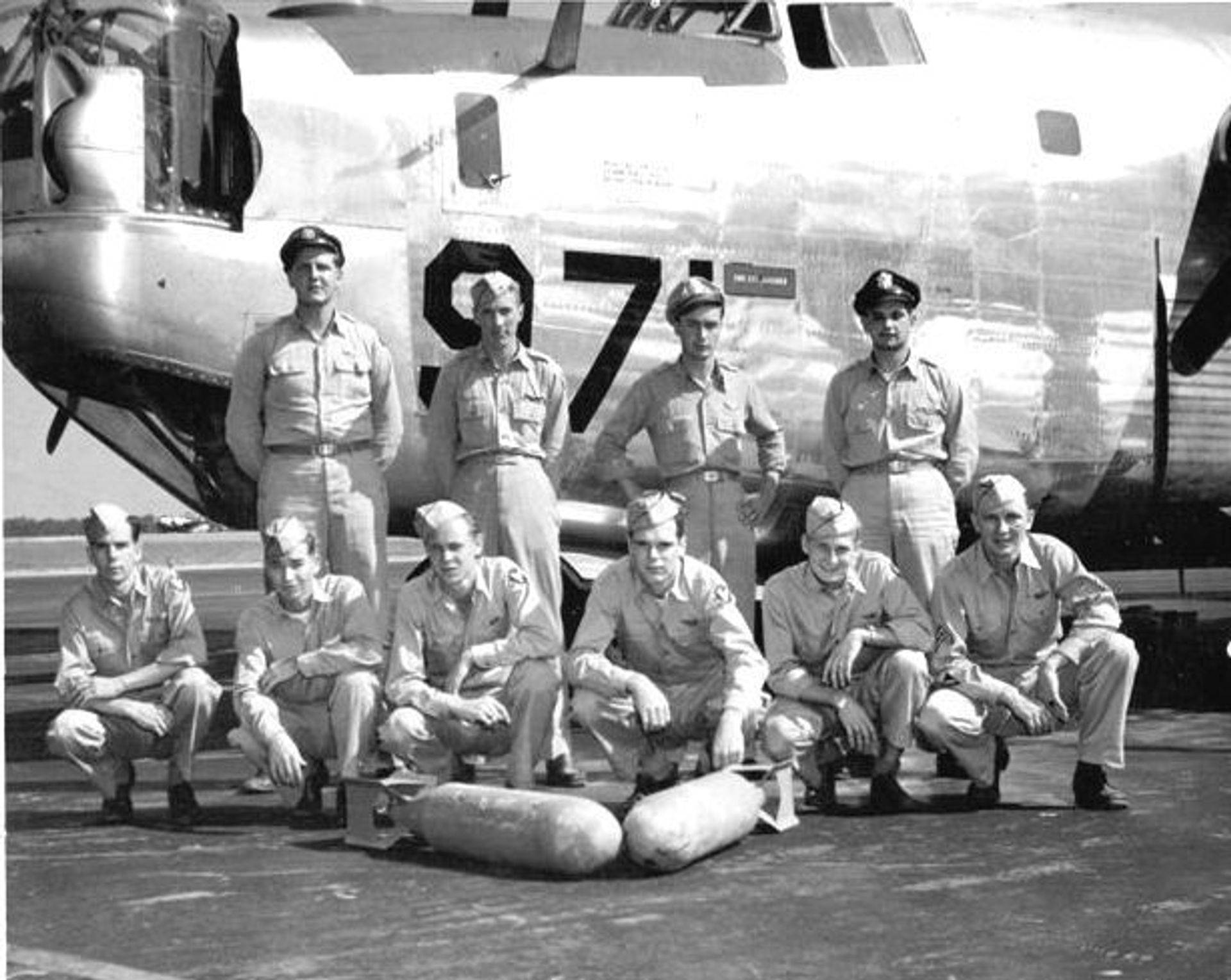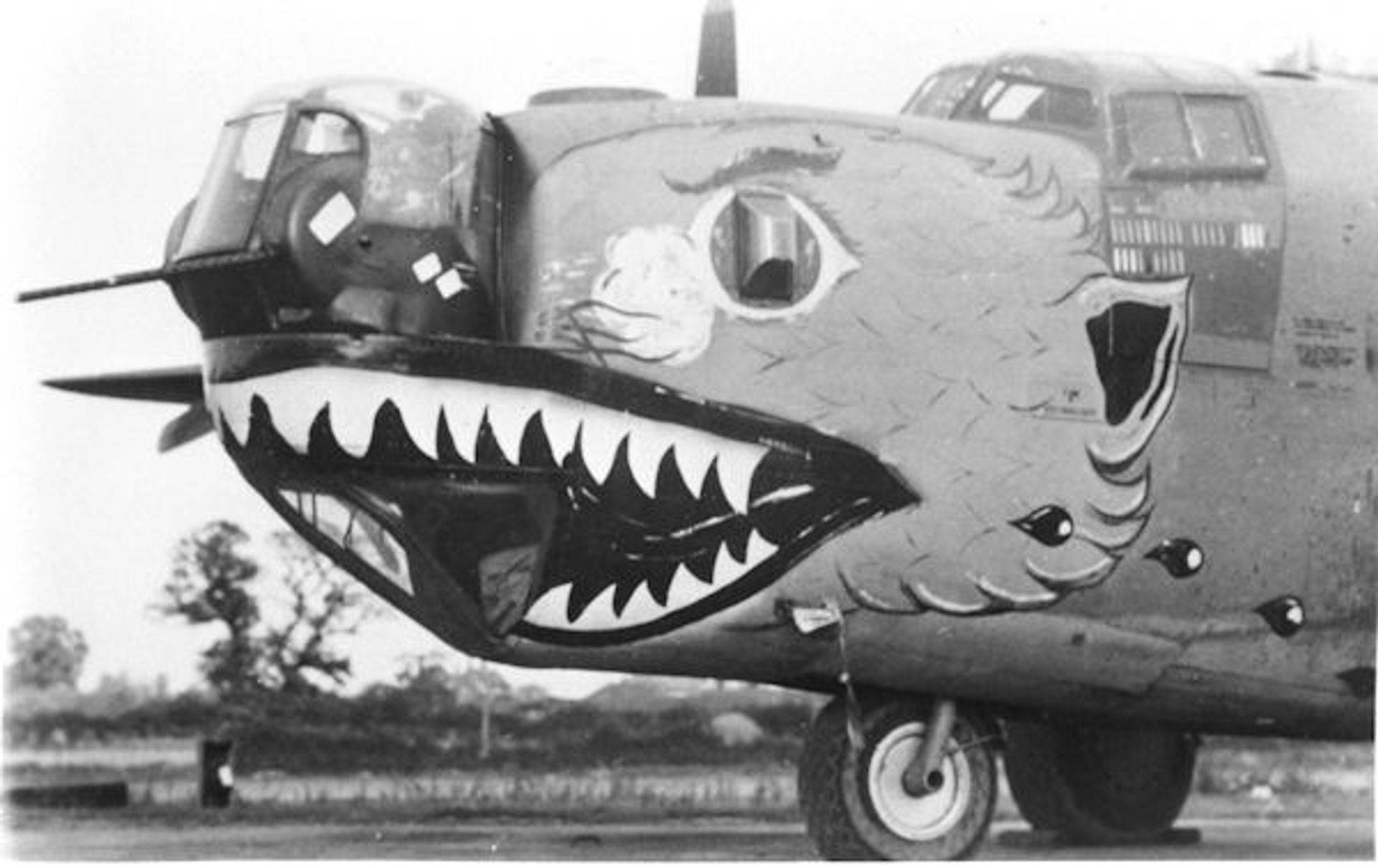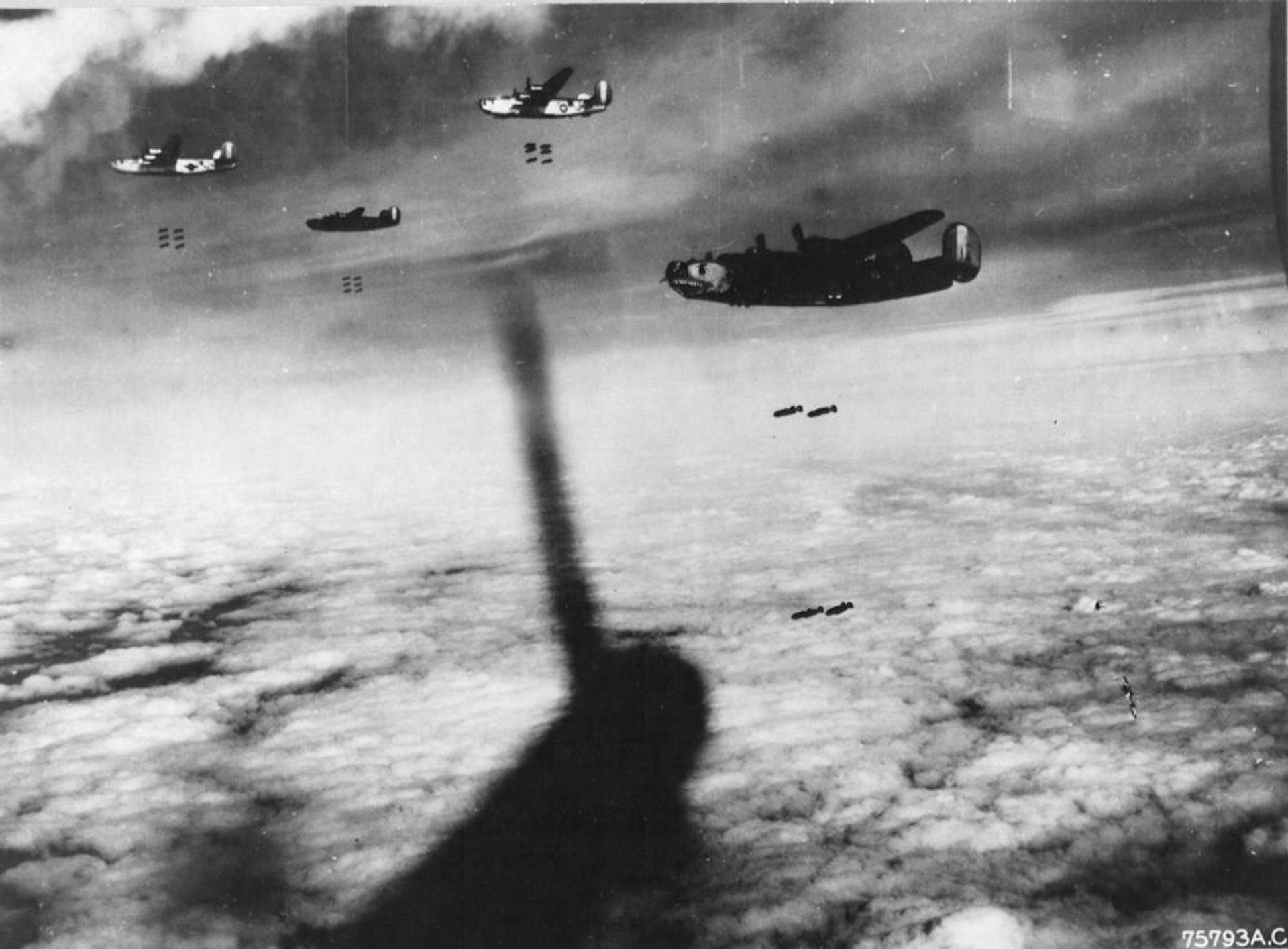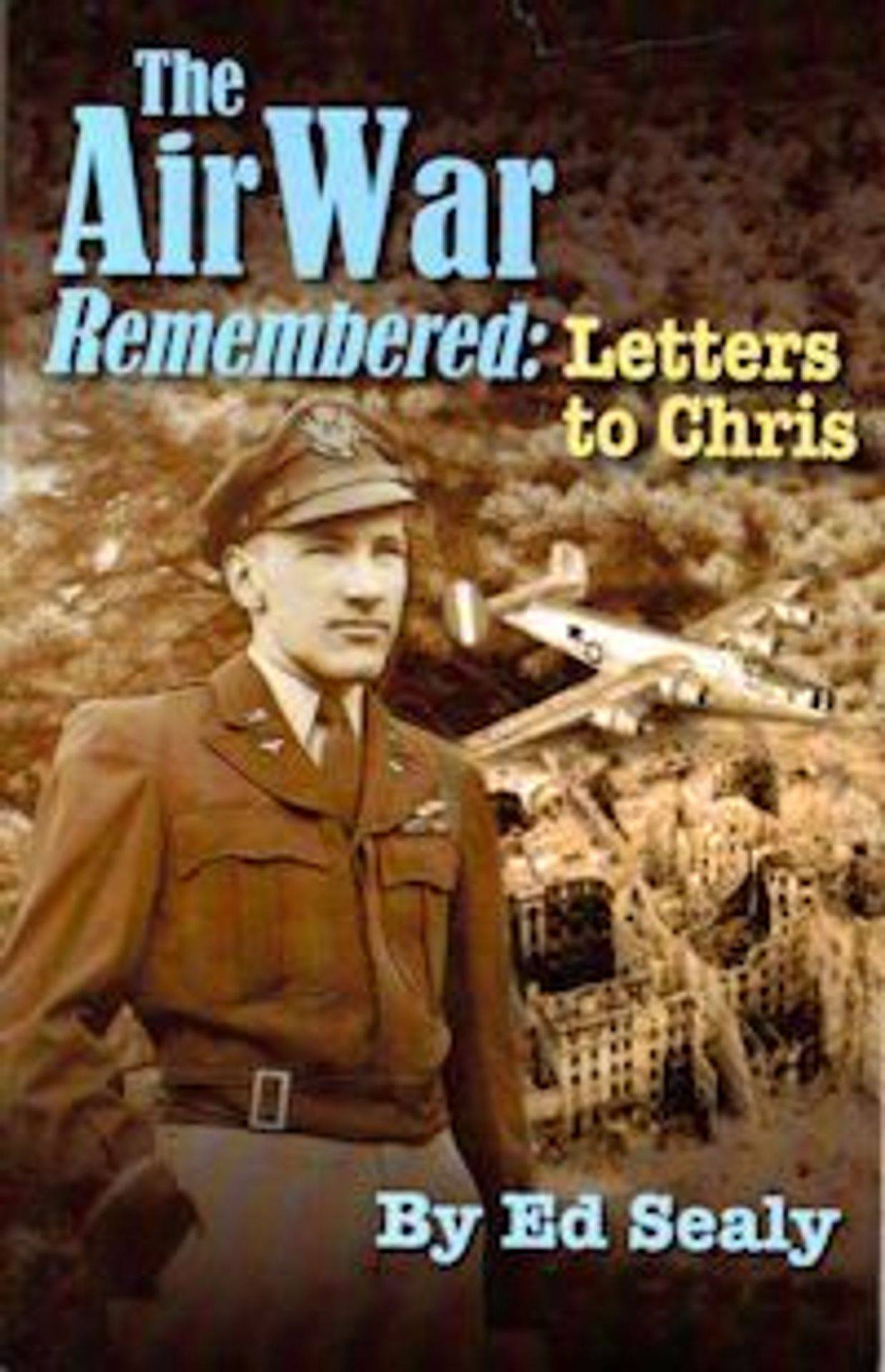Sealy Crew – Assigned 755th Squadron – September 21, 1944

Completed Tour
| Rank | Name | Serial # | Crew Pos | Date | Status | Comments |
|---|---|---|---|---|---|---|
| 1Lt | Edwin J Sealy | 0826304 | Pilot | Apr-45 | CT | Trsf to 70RD |
| 1Lt | James E Goodgame | 0818662 | Co-Pilot | Apr-45 | CT | Completed Tour |
| 2Lt | Theodore Kichenko | Navigator | Sep-44 | UNK | Remv from crew after training | |
| 1Lt | Alvin Wilensky | 02056763 | Bombardier | Apr-45 | CT | Completed Tour |
| T/Sgt | Clyde A Huth | 19052093 | Radio Operator | Apr-45 | CT | Completed Tour |
| Cpl | James Edwards | Flight Engineer | Sep-44 | UNK | Became ill during training | |
| S/Sgt | Kenneth I Elliott | 11108414 | Aerial Gunner | Apr-45 | CT | Completed Tour |
| S/Sgt | David R Stanfield | 32930258 | Aerial Gunner | Apr-45 | CT | Completed Tour |
| S/Sgt | Richard H Searer | 33766930 | Aerial Gunner | Apr-45 | CT | Completed Tour |
| S/Sgt | Bernard D Grant | 37531401 | Armorer-Gunner | Apr-45 | CT | Completed Tour |
Sealy and crew came to the 755BS in late September 1944. They were transferred to the 753BS on October 23, 1944 and flew the majority of their missions in that squadron. Their first mission was on October 6, 1944 and their last on April 7, 1945.
Lt Theodore Kichenko, navigator, trained with the crew but was removed prior to the crew moving overseas. It is not known to what unit Lt Kitchenko was assigned.
Cpl James Edwards, flight engineer, became ill during training. He was replaced once the crew arrived in England by Sgt Collis B. England. England had been assigned to the 755th Squadron on August 30, 1944 as an individual replacement flight engineer. It is believed that he flew his entire combat tour with Sealy’s crew.
The crew’s most harrowing mission, according to Ed Sealy, was the January 10th mission to Schonberg, Germany. The crew lost two engines and were forced to seek an airfield on the Continent. They ended up crash landing in France with no serious injuries to the crew. They were returned to Horsham a couple of days later, but did not resume combat flying for more than two weeks.
The crew completed their combat tour in mid-April 1945 and were sent back to the States for R&R and reassignment.
Missions
| Date | Target | 458th Msn | Pilot Msn | Serial | RCL | Sqdn | A/C Msn | A/C Name | Comments |
|---|---|---|---|---|---|---|---|---|---|
| 06-Oct-44 | WENZENDORF | 129 | 1 | 42-51179 | P | J3 | 38 | DUSTY'S DOUBLE TROUBLE | |
| 07-Oct-44 | MAGDEBURG | 130 | 2 | 42-50555 | G | J4 | 2 | BABY SHOES | |
| 12-Oct-44 | OSNABRUCK | 132 | 3 | 44-40126 | L | Z5 | 25 | SPITTEN KITTEN / SKY TRAMP | |
| 14-Oct-44 | COLOGNE | 133 | 4 | 42-51206 | S | 7V | 6 | THE PIED PIPER | |
| 19-Oct-44 | MAINZ | 136 | 5 | 42-110141 | U | J4 | 22 | BREEZY LADY / MARIE / SUPERMAN | |
| 26-Oct-44 | MINDEN | 138 | 6 | 44-40201 | N | J4 | 21 | SILVER CHIEF | |
| 04-Nov-44 | MISBURG | 141 | 7 | 42-95133 | K | J4 | 10 | LADY JANE | |
| 06-Nov-44 | MINDEN | 143 | 8 | 44-40277 | P | J4 | 22 | MISS USED | |
| 16-Nov-44 | ESCHWEILER | 147 | 9 | 41-28980 | V | J4 | 10 | UNKNOWN 009 | |
| 25-Nov-44 | BINGEN | 149 | ABT | 44-40281 | Q | J4 | -- | A DOG'S LIFE | ABORT - MECH |
| 26-Nov-44 | BIELEFELD | 150 | 10 | 44-40277 | P | J4 | 24 | MISS USED | |
| 06-Dec-44 | BIELEFELD | 153 | 11 | 42-51200 | B+ | J4 | 1 | STINKY | |
| 24-Dec-44 | SCHONECKEN | 157 | 12 | 42-51200 | B | J4 | 2 | STINKY | |
| 28-Dec-44 | ST. WENDEL | 160 | 13 | 44-40285 | H | J4 | 50 | TABLE STUFF | |
| 30-Dec-44 | NEUWIED | 161 | 14 | 42-51200 | B | J4 | 4 | STINKY | |
| 31-Dec-44 | KOBLENZ | 162 | 15 | 42-51200 | B | J4 | 5 | STINKY | |
| 07-Jan-45 | RASTATT | 166 | ASSY | 41-28697 | Z | Z5 | A47 | SPOTTED APE | ASSEMBLY CREW |
| 08-Jan-45 | STADTKYLL | 167 | 16 | 42-50768 | Y | J4 | 21 | ARISE MY LOVE AND COME WITH ME | |
| 10-Jan-45 | SCHONBERG | 168 | 17 | 44-40201 | N | J4 | 37 | SILVER CHIEF | CRSH LAND FRANCE |
| 29-Jan-45 | MUNSTER | 175 | 18 | 42-100408 | I | J4 | 31 | LADY LUCK / THE BEAST | |
| 15-Feb-45 | MAGDEBURG | 182 | 19 | 42-100408 | I | J4 | 38 | LADY LUCK / THE BEAST | |
| 16-Feb-45 | OSNABRUCK | 183 | 20 | 42-100408 | I | J4 | 39 | LADY LUCK / THE BEAST | |
| 19-Feb-45 | MESCHADE | 184 | MSHL | -- | -- | -- | -- | MARSHALING CHIEF | |
| 20-Feb-45 | NUREMBURG | REC | -- | 42-100408 | I | J4 | -- | LADY LUCK / THE BEAST | RECALL - WEATHER |
| 21-Feb-45 | NUREMBERG | 185 | 21 | 42-100408 | I | J4 | 40 | LADY LUCK / THE BEAST | |
| 22-Feb-45 | PEINE-HILDESHEIM | 186 | 22 | 42-100408 | I | J4 | 41 | LADY LUCK / THE BEAST | |
| 24-Feb-45 | BIELEFELD | 188 | 23 | 42-100408 | I | J4 | 43 | LADY LUCK / THE BEAST | PHOTO |
| 26-Feb-45 | BERLIN | 190 | 24 | 42-100408 | I | J4 | 45 | LADY LUCK / THE BEAST | GROUP 200TH MISSION |
| 27-Feb-45 | HALLE | 191 | 25 | 44-40298 | E | Z5 | 33 | THE SHACK | |
| 01-Mar-45 | INGOLSTADT | 193 | 26 | 44-40273 | T | J4 | 42 | HOWLING BANSHEE | |
| 02-Mar-45 | MAGDEBURG | 194 | 27 | 44-40285 | H | J4 | 70 | TABLE STUFF | |
| 04-Mar-45 | STUTTGART | 196 | 28 | 42-100408 | I | J4 | 46 | LADY LUCK / THE BEAST | |
| 09-Mar-45 | OSNABRUCK | 200 | 29 | 42-100408 | I | J4 | 49 | LADY LUCK / THE BEAST | |
| 12-Mar-45 | FRIEDBURG | 202 | 30 | 42-100408 | I | J4 | 51 | LADY LUCK / THE BEAST | |
| 18-Mar-45 | BERLIN | 206 | 31 | 42-50912 | D | J4 | 23 | THE TRAVLIN' BAG | |
| 21-Mar-45 | HESEPE | 209 | 32 | 42-110059 | T | Z5 | 72 | UNKNOWN 056 | |
| 23-Mar-45 | OSNABRUCK | 211 | ABT | 44-40287 | J | J4 | -- | BACHELOR'S BEDLAM | ABORT - MECH |
| 24-Mar-45 | NORDHORN | 212 | 33 | 44-50539 | B | J4 | 6 | UNKNOWN 045 | |
| 02-Apr-45 | TIRSTROP | ABN | -- | 42-51200 | F | J4 | -- | STINKY | ABANDONED |
| 04-Apr-45 | PERLEBERG | 217 | 34 | 42-51200 | F | J4 | 8 | STINKY | |
| 05-Apr-45 | PLAUEN | 218 | 35 | 42-51200 | F | J4 | 9 | STINKY | |
| 07-Apr-45 | KRUMMEL | 220 | 36 | 42-51200 | F | J4 | 10 | STINKY |
January 10, 1945
SILVER CHIEF
BY ED SEALY AS TOLD TO ABBY WEINGARTEN
Of the 35 missions Ed Sealy flew over Germany in World War II, No. 16 was the closest call. As a first lieutenant and pilot in charge of a nine-man crew, Sealy commanded B-24J Liberators in the 458th Bomb Group, 753rd Squadron of the Eighth Air Force. On Jan. 10, 1945, the members of Sealy’s crew left their base in Norwich, England, and set out for the skies above Schonberg. While attempting to protect U.S. forces on the ground, two engines on the “Silver Chief” aircraft failed. Had Sealy not acted correctly in the emergency, his crew might have known a far different fate. Sealy later became an aviation insurance agent and an avid thespian in community theater. He lives in Port Charlotte.
“This was right after the Battle of the Bulge. We were bombing supply lines, so they were short missions over the lines. But this one turned out to be a lot longer. We bombed at 22,500 feet through undercast weather. Our No. 1 and No. 4 engines malfunctioned, so we were in serious trouble, because a B-24 can maintain level flight on two engines but it can’t gain altitude.

“All of our gyro instruments were hooked up to engine No. 4, and when it went out, we tried switching over to No. 3. It was minus 49 degrees, and the switch had frozen, so we had to fly with just basic instruments — a needle, a ball, airspeed and a compass. Then we had to descend into a heavy snowstorm with limited visibility.
“We got into the airfield at Merville, near Lille, France. Making a normal approach was just about impossible, since we were flying blind with most of our
instruments nonfunctional. We knew that once we descended to land, we would have no ability to regain altitude. Remembering an exercise from my training days, I decided to try timed turns. This is where one flies one minute in each of four directions and comes back to the starting point. In this case, we had to lose altitude in order to land, and we only had one chance to do it.
“The plan worked, and we got back to the airport OK, but we were still a little high for landing. The tower wanted us to go around, but I knew that was
impossible, so I got the plane on the ground. The co-pilot and I both stood on the brakes, but we ran out of airport space and lost our nose wheel in a ditch. This caused us to finish up at a 45-degree angle on the nose and our four engines.
“We shut everything down, but we still heard a loud hissing noise. We all got out of the plane as quickly as possible. I got out through the small window adjacent to my seat, which seems impossible in retrospect. The rest of the crew was in the waist area in crash position. When the plane came to rest, they were temporarily ‘airborne’ in their seats, but they got out with a few scratches.
“By now, the rear of the plane was 30 feet in the air, and one by one the men dropped into a snow bank with no injuries. They probably could have walked out through the bomb bay, but everyone wanted to get out as fast as they could.
“Once we returned to our base a couple of days later, I learned that the two engines that had quit each had 575 combat hours on them, because the crew chief was going for the record. The Silver Chief didn’t fly again after that.”
Abby Weingarten may be contacted via e-mail at [email protected].
B-24J-100-CO 42-100408 J4 I Lady Luck/The Beast

Ship #408 was an original 753BS aircraft, participating in the group’s first diversion missions in February 1944 and, by war’s end, had amassed a total of 54 combat missions, flying its last on April 20, 1945. The aircraft was flown back to the States in June 1945. Originally named Lady Luck, at some point in its illustrious career, an artist with flair for the unusual, decided to paint the entire nose with a cat-like face and the jaws of a shark. No name having been applied, personnel referred to it as The Beast or Beastface. Sealy and crew flew this aircraft on 10 of their combat missions, including the February 24, 1945 raid on Bielefeld, where someone snapped a photo at the moment bombs were released.

February 24, 1945: The Beast, flown by Sealy and crew, drop their bombs on the marshaling yards of Bielefeld, Germany.
The Air War Remembered: Letters to Chris

February 24, 1945: The Beast, flown by Sealy and crew, drop their bombs on the marshaling yards of Bielefeld, Germany.
